Navigation
Proposal
Research
Modeling
Visualization
Prototyping
Conclusion
|
Final Project
Please use the navigation to the left to browse.
Research
Olympic Weightlifting
Olympic Weightlifting involves two competition lifts, the snatch and the clean & jerk. According to the USA Weightlifting Club Coach Manual, the snatch involves an athlete that "[pulls] the barbell from the platform with both hands in one continuous movement to arms length overhead" (Eksten 13). The rules of the clean & jerk require the athlete "to clean the barbell with two hands from the platform to the chest in one movement... The lifter then stands up and jerks the weight by bending and extending the legs to drive the bar to arms length" (Eksten 20).
Knowing certain principles of physics and biomechanics can help us to understand a number of principles of optimal technique.
Biomechanical Principles
Biomechanics is "the application of engineering principles (mechanics) applied to the human body" (Eksten 10). In Weightlifting, it has been used extensively to study and develop efficient and optimal technique. When discussing "optimal" technique, it is important that one keep in mind the utilization of personal style due to individual peculiarities. Thus, the technique discussed and studied is generalized to idealized proportions, specific to the sport of Weightlifting.
Center of Gravity
- The center of gravity (COG) of a body is "the point at which all body parts are equally distributed" (Eksten 10). Once a lifter lifts a barbell, a common center of gravity is generated between the two objects. The location of the COG of the combined unit will be closer to the heavier object.
Action and Reaction
- Arthur Drechsler's The Weightlifting Encyclopedia discusses the importance of this principle. He refers to Newton's third law of motion, stating that "for every force exerted by one body on another, there is an equal and opposite force exerted by the second on the first" (Drechsler 506). Thus, the lifter is able to create an impulse on the barbell by driving his/her feet into the ground. The impulse is a function of the net force and the time over which a force is applied. In their book, Weightlifting: Fitness for All Sports, Dr. Tamas Ajan and Prof. Lazar Baroga describe the force which is developed during the lift as "proportional to the weight of the barbell and to the speed of execution" (Ajan 44). Thus, force is equal to mass times acceleration (F = m x a).
Barbell Trajectory
- An idealized barbell trajectory can be developed as a result of COG, impulse, force, as well as many other factors. With the goal of making technique as rational and efficient as possible, Dr. Tamas Ajan describes certain general principles that involve the path of the bar (Ajan 43).
- the relative perpendicularity of the motion of the bar during lifting, resulting in a trajectory that resembles the elongated form of the letter "S;"
- the shortest path covered by the bar;
- the optimal speed of execution;
- the involvement of individual peculiarities;
- the dosage of muscular force as compared to the weight of the barbell.
- Dr. Ajan continues, explaining the importance of the double knee bend: "To attain this aim, the follwing motions must be executed: when the bar has gone beyond the knees and reached the lower third of the thigh, a slow motion forward of the knees takes place, at the same time the angle between the thighs and the trunk increases. Dynamometer measurements have proved that this is the position in which the muscle groups of the back and legs can develop maximum force" (Ajan 43).
Past Methods of Visualization
Previous methods of visualizing Weightlifting technique involve primarily hand-drawn pictures and diagrams, as well as photographs.
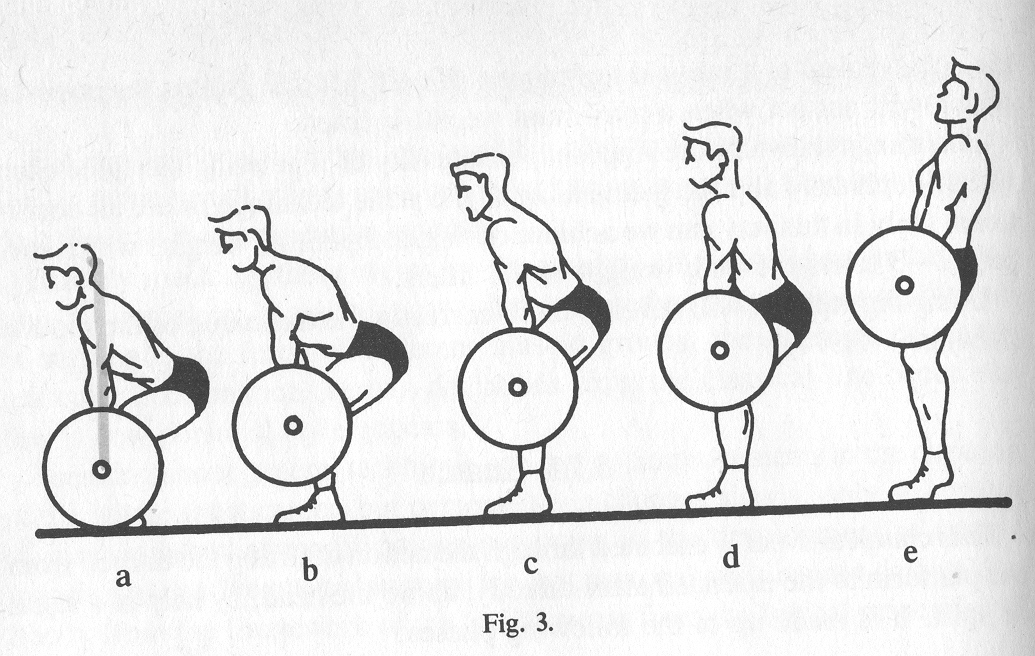 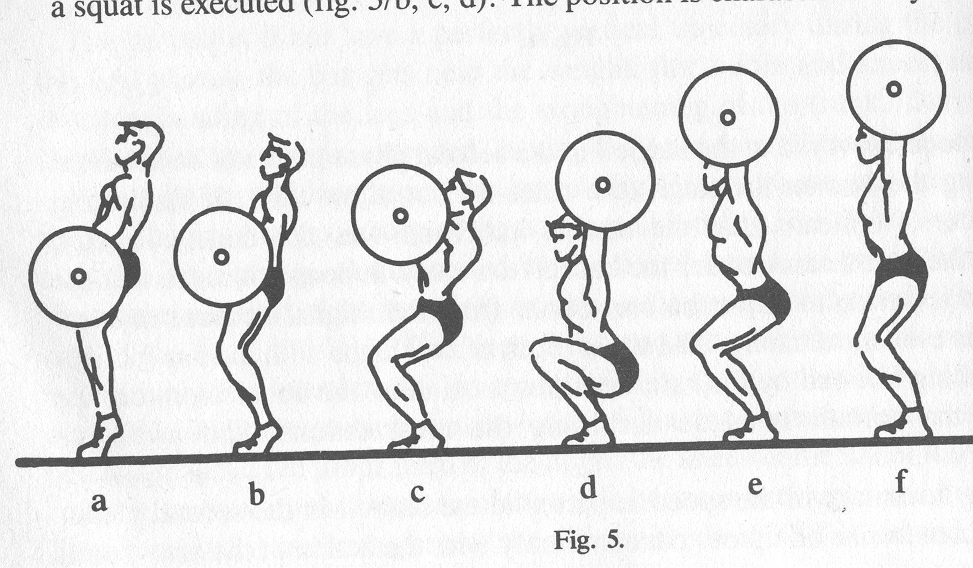
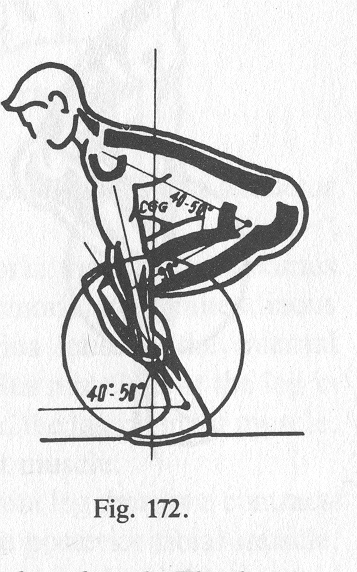 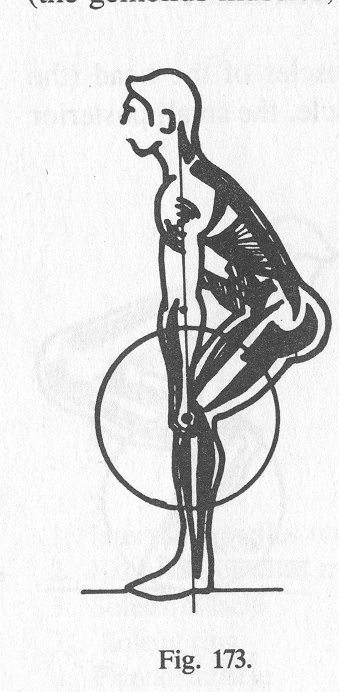 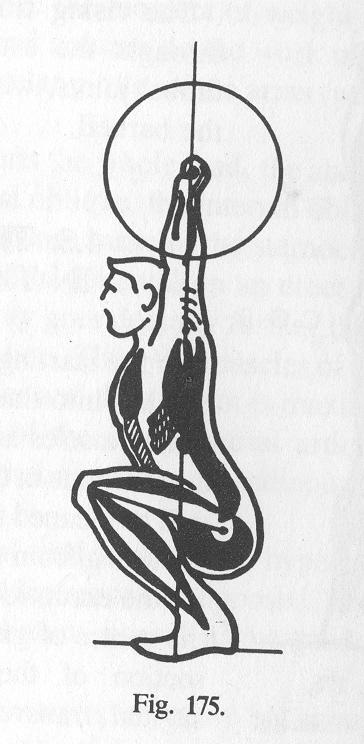
Images taken from International Weightlifting Federation, Weightlifting: Fitness For All Sports (Ajan 135)
Other forms of visualization involve film and motion capture. These methods can more realistically visualize principles such as force, speed, and trajectory.
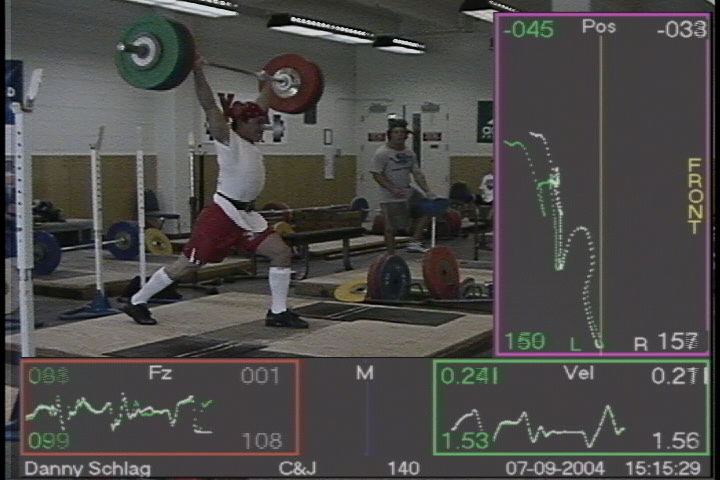
|




